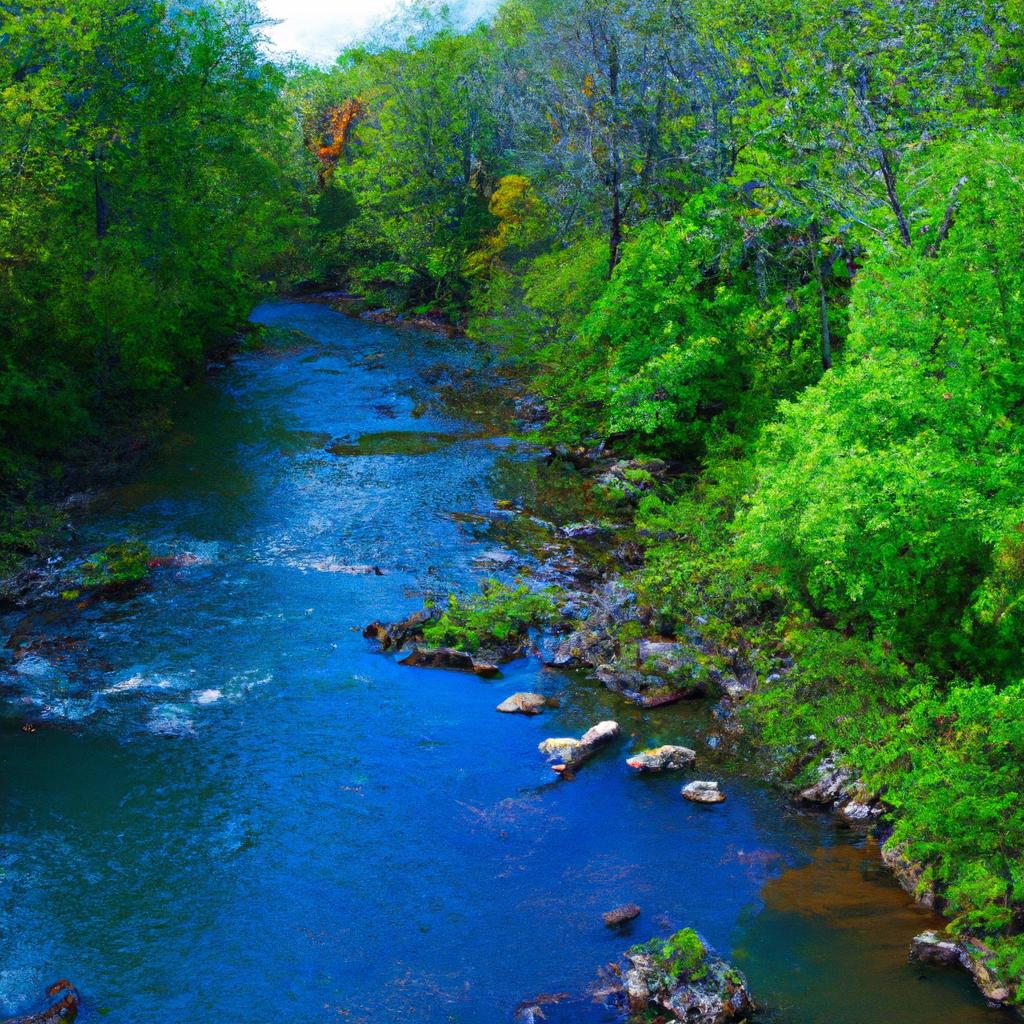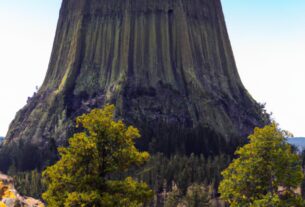The world is brimming with awe-inspiring natural wonders, and among them, coloured rivers reign supreme. You may have marveled at photographs of rivers boasting vibrant hues, ranging from deep blues to vivid reds, and wondered what gives these rivers their extraordinary colors. In this article, I’ll take you on an exciting journey to uncover the captivating beauty of coloured rivers and why they are a treasure worth discovering.
The Splendor Unveiled: Understanding Coloured Rivers
Coloured rivers, also known as “rainbow rivers,” are bodies of water that defy the norm of the usual blue or green shades. These rivers exhibit a mesmerizing symphony of colors, ranging from red, blue, and green to yellow and purple. What brings about these breathtaking hues is the presence of diverse minerals, algae, and sediments that lend these rivers their distinctive appearance.
A Crucial Role in the Ecosystem and Society
Coloured rivers play a crucial role in the ecosystem, serving as habitats for a diverse range of aquatic plants and animals. Moreover, they serve as significant water sources for numerous communities across the globe. These extraordinary rivers also attract tourists from near and far, contributing to the local economy and raising awareness about the significance of preserving these natural wonders.
Deep Roots: A Brief Historical Exploration
Coloured rivers boast a rich history that spans centuries. Take, for instance, the Cano Cristales River in Colombia, which has been a sacred site for indigenous peoples since time immemorial. Known as “The River of Five Colors,” this mesmerizing river is home to a unique species of blooming plants, adding to its natural beauty and allure.
As we venture further, we’ll dive into the captivating scientific explanations behind the phenomenon of coloured rivers.
The Science Unveiled: What Creates the Vibrant Colors?
Have you ever wondered about the science behind the vibrant colors of these wondrous rivers? Let’s embark on a journey to unravel their mysteries.
A. The Intricate Causes of Coloured Rivers
The remarkable colors in these rivers result from a combination of factors, including the presence of minerals, organic matter, and algae. For example, rivers like the Rio Tinto in Spain acquire their red and orange hues due to high iron levels in the water. Conversely, the blue-green hues in the Kelani River in Sri Lanka are a result of the abundance of algae.
B. Distinct Types of Coloured Rivers
Coloured rivers can be broadly classified into two primary types: clearwater rivers and whitewater rivers. Clearwater rivers showcase crystal-clear water, imbuing them with a unique blue-green tinge. On the other hand, whitewater rivers exhibit a milky-white color due to the presence of sediments and particles suspended in the water.
C. Influencing Factors: Unveiling the Secrets Behind Coloured Rivers
Several factors influence the captivating colors of rivers. These include the types of rocks and soil in the vicinity, precipitation levels, and human activities. Human practices such as mining and industrial activities can introduce high levels of minerals and pollutants into the water, directly impacting the color and quality of the rivers.
Understanding the scientific foundations behind coloured rivers allows us to appreciate their beauty more deeply. However, it is essential to recognize that these rivers are fragile ecosystems, demanding preservation and protection. Let’s now explore some of the most breathtaking coloured rivers around the world.
The World’s Most Breathtaking Coloured Rivers
If you’re seeking an extraordinary travel experience, make sure to add visiting a coloured river to your bucket list. From the Amazon River in Brazil to the Waitomo River in New Zealand, a multitude of stunning rivers are waiting to be explored. Here are just a few of the most captivating examples:
Amazon River, Brazil
The Amazon River, the world’s largest by volume, is renowned for its distinctive murky brown color. However, certain parts of the river, such as the Rio Solimões, exhibit a vibrant shade of turquoise owing to the mineral-rich waters. The exquisite contrast created by the merging of these two rivers is truly a sight to behold.
Cano Cristales, Colombia
Nestled in Colombia’s Serrania de la Macarena mountain range, Cano Cristales, also known as “The River of Five Colors,” dazzles visitors with its splendid array of red, yellow, green, blue, and black hues. The river owes its vibrant colors to the presence of aquatic plants, algae, and minerals. Cano Cristales welcomes visitors from June to December each year.
Yangtze River, China
As the longest river in Asia, the Yangtze River is a vital water source for millions of people. Its color, which changes with the seasons and weather conditions, is a sight to behold. During the rainy season, sediment in the water turns the river a rich brown, while the dry season gifts it with a crystal-clear blue appearance.
Soca River, Slovenia
Nestled in the Julian Alps of Slovenia, the Soca River enchants with its captivating emerald-green hues. Minerals and algae present in the water lend it this remarkable color. The Soca River is a popular destination for kayaking, rafting, and fishing, offering adventurers a unique nature-filled experience.
Li River, China
Located in Guilin, China, the Li River treats visitors to a picturesque landscape of crystal-clear waters meandering amidst towering karst mountains. The ethereal beauty of this river is particularly enchanting during sunrise and sunset, providing unforgettable memories.
Waitomo River, New Zealand
Situated on New Zealand’s North Island, the Waitomo River is famed for its glowworm caves. The river’s brilliant blue hue results from the abundant limestone in the area. Visitors can embark on a boat ride through the glowworm caves, marveling at the river’s stunning beauty firsthand.
Whether you are a nature enthusiast or simply seeking an extraordinary travel experience, these coloured rivers deserve a prominent spot on your itinerary.
Preserving Coloured Rivers for Future Generations
Preserving coloured rivers for future generations is of utmost importance. As remarkable natural wonders and vital components of ecosystems, they face threats from human activities, climate change, and pollution. In this section, we delve into the challenges confronting coloured rivers and the ongoing conservation efforts.
A. Perils to Coloured Rivers’ Existence
Human activities, including mining, deforestation, and agriculture, exert a significant impact on coloured rivers. These activities contribute to soil erosion, escalating sedimentation levels and deteriorating the rivers’ color and quality. Pollution poses another substantial threat, jeopardizing the lives of flora, fauna, and the overall ecosystem.
Climate change stands as a formidable challenge, altering the water cycle and rainfall patterns that sustain these rivers. Additionally, the melting of glaciers, which serve as a vital water source for many coloured rivers, poses a dire consequence of climate change.
B. Conservation Efforts: Protecting Nature’s Masterpieces
In recognition of their significance, numerous conservation efforts are underway to safeguard coloured rivers. Governments and non-governmental organizations collaborate to implement policies and regulations aimed at curbing harmful human activities. These initiatives include watershed management, river conservation programs, and the establishment of protected areas.
Communities residing near these rivers are actively participating in conservation efforts. They incorporate traditional knowledge and practices to protect the rivers and their delicate ecosystems. As an example, indigenous communities in the Amazon work tirelessly to shield their sacred rivers from illegal mining and logging activities.
C. The Vital Role of Responsible Tourism
Tourism offers a dual-edged impact on coloured rivers. While it provides economic incentives for preserving these natural wonders, unregulated tourism can also jeopardize the ecosystems and cultural significance of coloured rivers.
Responsible tourism is crucial to maintaining the integrity of coloured rivers. Visitors should be mindful of their actions and their potential impact on the rivers, adhering to guidelines that protect both the rivers and their surrounding ecosystems. Supporting conservation efforts through visits to protected areas and engaging in eco-tourism activities that benefit local communities can also make a substantial difference.
In conclusion, the preservation of coloured rivers is paramount, necessary for both ecosystems and cultural heritage. Governments, non-governmental organizations, communities, and tourists must collaborate to protect and conserve these captivating natural wonders, ensuring that they continue to evoke wonder and inspiration for generations to come.
Final Thoughts: Exploring Nature’s Wonders and Preserving Their Majesty
Coloured rivers mark an extraordinary natural wonder that merits exploration. From the depths of the Amazon River in Brazil to the shimmering Waitomo River in New Zealand, these rivers beckon travelers seeking a deep connection with nature.
Throughout our journey, we have deciphered the scientific underpinnings of coloured rivers, marveled at the world’s most stunning examples, and examined their cultural significance. It is abundantly clear that these rivers hold a special place in the hearts of the communities that call them home.
Recognizing the importance of preserving these natural wonders for future generations, we must manage the impact of tourism responsibly. By adopting sustainable tourism practices, we can ensure that these rivers remain a source of wonder and inspiration for years to come.
Thank you for embarking on this enlightening journey of nature’s marvels. Let us continue exploring the beauty of our world and dedicate ourselves to preserving it for future generations.
Citations:
-
“Rainbow Rivers: The World’s Most Colorful Waterways.” Travel + Leisure, Meredith Corporation, 5 Mar. 2021, www.travelandleisure.com/attractions/natural-wonders/rainbow-rivers.
-
“Cano Cristales.” National Geographic, National Geographic Society, 13 Sept. 2019, www.nationalgeographic.com/travel/destinations/south-america/colombia/cano-cristales-river.



